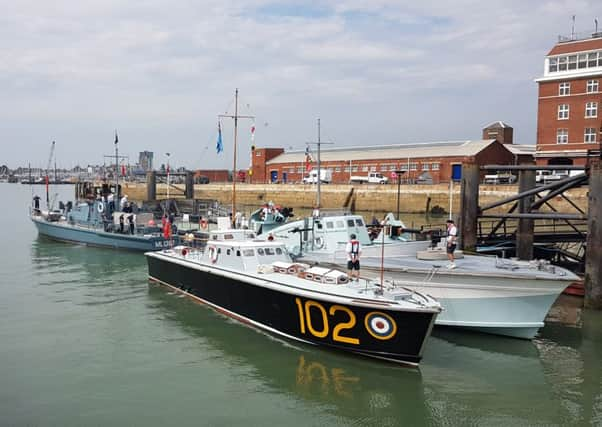'˜Spitfires of the Sea' in spectacular sail-past


The event, organised by the Coast Forces Heritage Trust, took place today at Portsmouth Historic Dockyard to mark its centenary.
Veterans who have served on Coastal Forces boats were at the event, as well as other descendants of those who have served on them.
Advertisement
Hide AdAdvertisement
Hide AdCaptain Trevor Robotham RN, of the Coastal Forces Heritage Trust, said: ‘The centenary of Coastal Forces celebrates a branch of the Royal Navy which played a significant part in the naval success of both world wars.
‘The brave young men who manned these fast attack craft made an extraordinary contribution to naval warfare. They operated in the darkest of nights in flimsy heavily armed craft, attacking the enemy at very close range. Their history from the sinking of a major Bolshevoic Cruiser in 1919 by a three manned 40 foot Coastal Motor Boat is a tremendous story which is now rightly celebrated.’
The Coastal Forces was born from the idea of Coastal Motor Boats (CMB) during the Great War. A group of young officers in Harwich wanted to build a small but fast attack motor boat which carried torpedoes and 100 years ago exactly, the first six Coastal Motor Boats were delivered to the Royal Navy.
The CMB flotillas had been disbanded by 1922 and were replaced by Motor Torpedo and Gun Boats.
Advertisement
Hide AdAdvertisement
Hide AdThe very young men who served in Coastal Forces manned craft that were wooden, heavily armed carrying ammunition and high octane fuel as they went into attack naval enemy at close range.
Coastal Forces played a prominent part in both world wars and the people who served in the Motor Torpedo Boats, Motor Gunboats and Motor Launches gained a greater number of distinguished service awards than any other branch of the Royal Navy.
HDML 1387, known as Medusa from her post war service, HMS Smiter, ST1502, HSL 102 and MGB 81 were at the service.
Medusa was a navigational guide for the Normandy Landings. MTB102 served in the Second World War both at Dunkirk and Normandy, and the HSL 102 was a rescue launch for aircrew ditched in the sea during the same period.
Advertisement
Hide AdAdvertisement
Hide AdHSL102 was inspected by King George and the Queen (later HM The Queen Mother) during the Second World War having rescued 30 to 40 aircrew in the space of a couple of weeks; The Queen Mother returning to relaunch her following her restoration in the 1990s.
HMS Smiter is a P2000 patrol boat currently serving with the Royal Navy. MGB 81 took part in D-Day and served in Robert Hichens’ MGB Flotilla. Robert Hichens was the most decorated Royal Naval Volunteer Reserve officer of the Second World War with two DSOs, three DSCs and Three Mentions in Despatches.
For information about the Coastal Forces Heritage Trust, visit: www.coastal-forces.org.uk